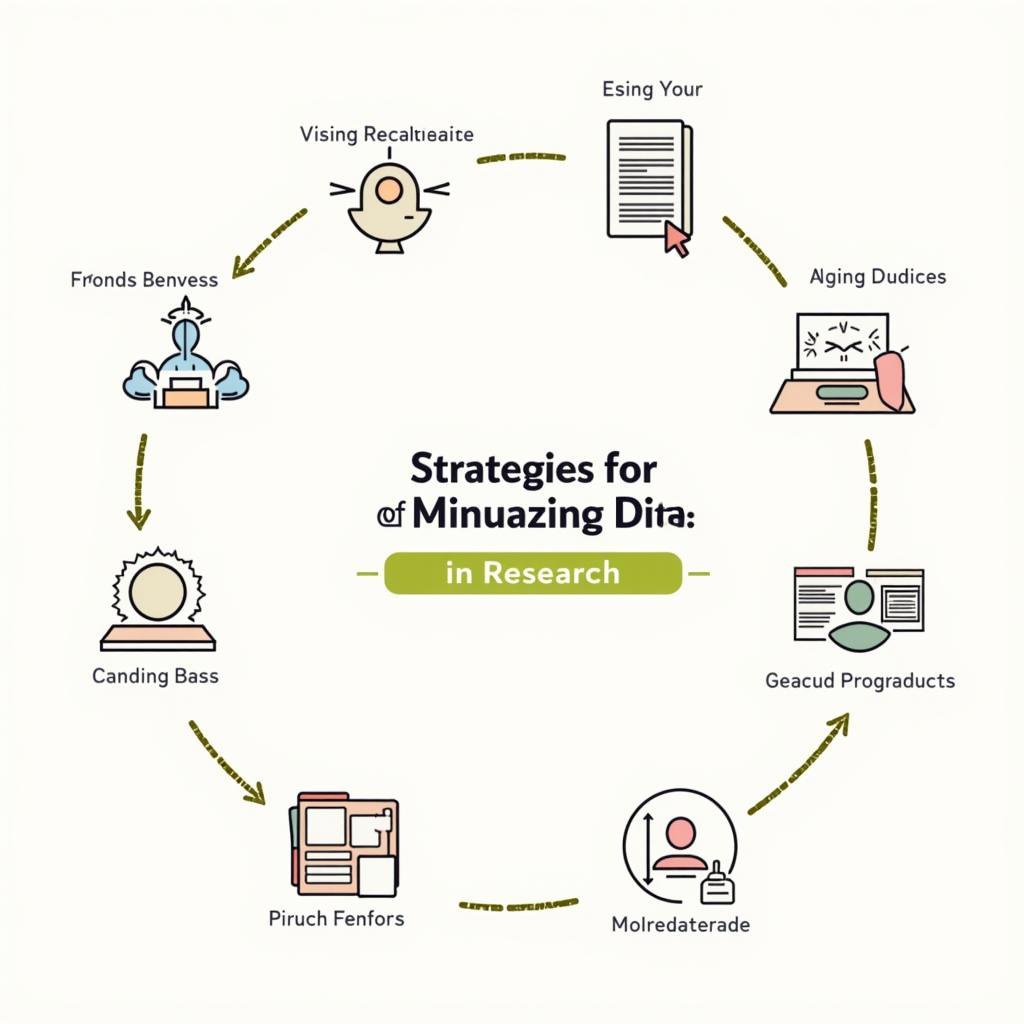Bias in research can significantly skew results, leading to inaccurate conclusions and potentially harmful consequences. Understanding how to identify bias is crucial for anyone consuming or conducting research, whether it’s for academic purposes, business decisions, or simply staying informed. This article will explore the various forms of bias that can creep into research and provide practical strategies for recognizing them.
Researchers at Solaris clinical research often encounter various types of bias during their studies. Learning to identify these biases is a crucial skill for ensuring the integrity and validity of research findings. By understanding the different forms bias can take, we can better evaluate the trustworthiness of information.
What are the Different Types of Research Bias?
Research bias can manifest in numerous ways, impacting every stage of the research process, from the initial design to the final interpretation of results. Some common types include:
- Selection Bias: This occurs when the sample group doesn’t accurately represent the population being studied. For instance, a study on sleep patterns that only surveys college students may not accurately reflect the sleep habits of the general population.
- Confirmation Bias: Researchers might unintentionally favor information that confirms their pre-existing beliefs, potentially ignoring data that contradicts their hypothesis. This can lead to a skewed interpretation of the results.
- Publication Bias: Studies with positive or exciting results are more likely to be published than those with negative or inconclusive findings, creating a distorted view of the available evidence.
- Funding Bias: The source of funding for a research project can sometimes influence the outcome. For example, a study funded by a pharmaceutical company might be more likely to report positive results for their drug.
After discussing selection bias, let’s delve into another common type of bias: confirmation bias. It’s a sneaky one, as it can unconsciously influence our interpretation of data. Understanding its impact is crucial for conducting objective research.
How to Spot Bias in a Research Paper
Identifying bias requires careful scrutiny of the research methodology and the presentation of results. Here are some key questions to ask:
- Who conducted the research and who funded it? Knowing the affiliations and funding sources can highlight potential conflicts of interest. A study on the health benefits of a product funded by the manufacturer of that product should be approached with caution.
- How was the sample selected? Was the sample size adequate? Was the selection process random and representative of the population being studied? Look for any indications of selection bias.
- How were the data collected and analyzed? Were appropriate statistical methods used? Are the results presented clearly and objectively, or is there evidence of cherry-picking data to support a specific conclusion?
- Are limitations of the study acknowledged? All research has limitations, and a credible study will openly address these. Be wary of research that overstates its findings or fails to acknowledge potential weaknesses.
secondary research sample can be particularly susceptible to bias. Being aware of these potential biases and critically evaluating the source material is vital for ensuring accurate interpretations.
Practical Tips for Avoiding Bias in Your Own Research
If you’re conducting research yourself, be mindful of these tips to minimize bias:
- Develop a clear research question and protocol before starting data collection. This can help you stay focused and avoid letting your preconceived notions influence your methods.
- Use a diverse and representative sample. Ensure your sample reflects the population you’re studying. Consider using random sampling techniques to minimize selection bias.
- Blind yourself to the treatment groups whenever possible. In experimental research, blinding prevents researchers from unconsciously influencing the results.
- Document your methodology thoroughly. Transparent reporting allows others to evaluate your research for potential biases.
- Seek peer review. Having other researchers critique your work can help identify biases you may have missed.
 Avoiding Bias in Your Own Research: Practical Tips
Avoiding Bias in Your Own Research: Practical Tips
where do limitations go in a research paper is a crucial aspect of transparent research practices. Acknowledging limitations enhances credibility and allows for future research to address these gaps.
Addressing the limitations within a research paper helps to maintain transparency and allows future studies to build upon existing findings. Similarly, literature review example for research proposal can be an excellent resource for understanding how to navigate existing research.
Furthermore, exploring resources on AI signal research can offer insights into innovative methods for analyzing data and potentially mitigating certain biases.
Conclusion
Identifying bias in research is essential for informed decision-making. By understanding the different types of bias and applying critical thinking skills, we can evaluate the credibility of research findings and draw more accurate conclusions. Being aware of potential biases helps us to be more discerning consumers of information and more rigorous researchers.
FAQs
- What is the most common type of bias in research?
- How can I tell if a study is biased?
- Can bias be completely eliminated from research?
- What are the consequences of ignoring bias in research?
- How can I minimize bias in my own research projects?
- What resources are available to help me identify bias?
- What is the role of peer review in mitigating bias?
For further assistance, please contact us at Phone Number: 0904826292, Email: research@gmail.com or visit our address at No. 31, Alley 142/7, P. Phú Viên, Bồ Đề, Long Biên, Hà Nội, Việt Nam. We have a 24/7 customer support team.